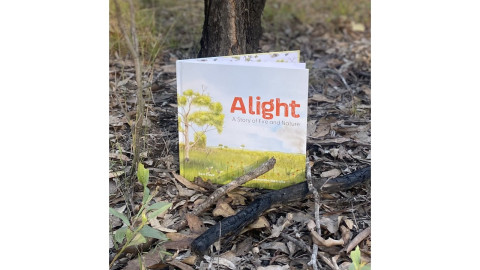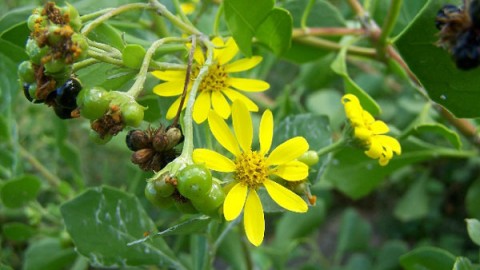The common wombat (Vombatus ursinus) gained a lot of attention in 2020 for “actively herding” animals that needed help during the fires into their burrows. Whilst this has not been proven, a study by Grant D. Linley et al. in the Journal of Mammalogy (2024) found that small vertebrates and birds can use burrows to better equip themselves against a variety of disturbances like fire, and provide a refuge for them to recover.
High severity fires like the 2019-2020 bush fires fueled scientists to look deeper at the relationship between animal activity (other than wombats) and fire with wombat burrows.
Wombats are known as ecosystem engineers. An ecosystem engineer can change their environment which affects the amount of living (biotic) or non-living (abiotic) resources available to other species. When a wombat creates a burrow for itself, a range of changes may occur like modifying water run-off, erosion, a change in soil properties and an increase in the germination of seeds. Another well-known Australian ecosystem engineer is the Long-nosed Potoroo (Potorous tridactylus). Read our article on how Long-nosed Potoroo interact with fire here: https://fireandrestoration.org.au/mark-graham-thinking-about-small-mammals-in-fire-regimes/
In the study, researchers used camera traps to take images of wildlife that compared sites that were burned (with varying levels of severity) and unburned areas, with burrows and without burrows. The photos used to compare sites were taken in Woomargama National Park and Woomargama State Forest in NSW.
When fires remove wooden logs and other features that small creatures use as their habitat, especially burned areas of high severity, a wombats burrow can provide a much needed safe place after fire. Species that were found to be the most active and benefited from burrows after fires include the Bush Rat (Rattus fuscipes), Agile Antechinus (Antechinus agilis), Painted Button-quail (Turnix varius), and Grey Shrike-thrush (Colluricincla harmonica) as well as others.
Birds and small mammals at risk of predation used burrows the most after fire. Animals that were competitors for resources like larger macropod animals (marsupials like the Wallaby) did not use the burrows or used them less often.
After a fire, Linley et al. (2024) found that there was a high number of native mammal species using a wombats burrow compared to other sites without burrows.
Animals also were found to use burrows to consume collected rainwater and for bathing.
It was also found that vegetation and soil can be altered in the area surrounding the burrow, which has the potential to increase favourable conditions for insectivores and omnivores including the Bush Rat, Agile Antechinus and Grey Shrike-thrush. Native predators like the large Lace Monitor (Varanus varius) in turn may be drawn to the area for food and warmth in burrows not effected by fire.
Burrows are vitally important to protect not just wombats, but also other species from harm, decline, and extinction, especially after high intensity fire.
Read more here: https://theconversation.com/cameras-reveal-wombat-burrows-can-be-safe-havens-after-fire-and-waterholes-after-rain-226396
References
Linley, G.D., Geary, W.L., Jolly, C.J., Spencer, E.E., Ashman, K.R., Michael, D.R., Westaway, D.M. & Nimmo, D.G., 2024. Wombat burrows are hotspots for small vertebrates in a landscape subject to gigafire. Journal of Mammalogy, p.gyae034, https://doi.org/10.1093/jmammal/gyae034
Top Image: Simon Grove on Flickr
This article was written by Rosie Dowsett a volunteer supporting the Nature Conservation Council of NSW’s Bushfire Program.









